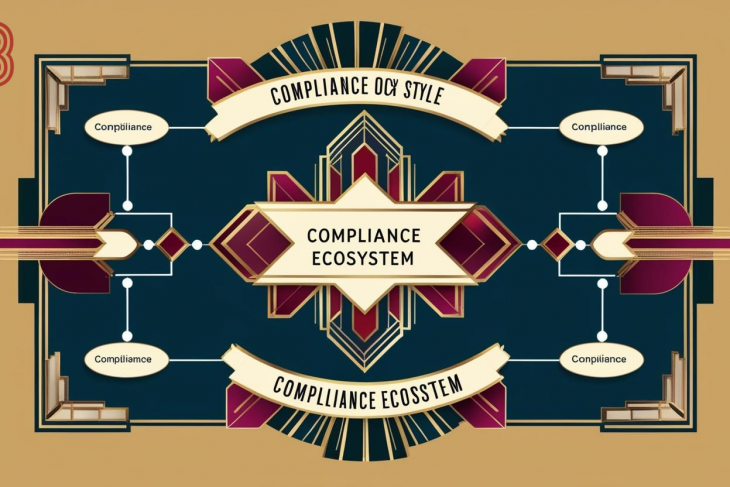
Introduction
The energy sector plays a pivotal role in shaping the global economy, with its complexities transcending national borders. The ongoing geopolitical instability, particularly the Russian invasion of Ukraine, has resulted in significant shifts in both Ukraine’s and the European Union’s energy security, market structures, and global energy dynamics. This report analyzes the risks facing the energy sector in Ukraine and the EU, explores the financial implications of these risks, and discusses effective risk management strategies to safeguard investments in the energy market. It will also forecast the potential impacts of these risks on financial markets, particularly within the energy sector, and provide insights on mitigation measures that can enhance market resilience.
1. Energy Sector Risks in Ukraine and the European Union
To effectively manage risks, understanding their sources and potential consequences is essential. The energy sector in Ukraine and the EU is vulnerable to a variety of risks, spanning geopolitical, economic, environmental, technological, and regulatory domains. Each of these risks not only affects the energy security of both regions but also reverberates across global financial markets.
1.1 Geopolitical Risks
The most significant risk currently impacting the energy sector in both Ukraine and the EU is geopolitical instability. The war in Ukraine, initiated by Russia’s invasion in 2022, has severely disrupted the energy market and created a cascade of risks for Europe, which has been heavily reliant on Russian energy supplies.
Energy Supply Disruptions: Russia has historically been a key supplier of natural gas, oil, and coal to Europe. The ongoing conflict has led to an energy crisis, with Europe scrambling to diversify its energy sources. The European Union has set ambitious goals to reduce its dependency on Russian energy and is increasingly turning to alternative energy sources, such as liquefied natural gas (LNG), renewable energy, and energy imports from countries like the United States, the Middle East, and North Africa.
-Geopolitical Uncertainty in Ukraine: Ukraine’s energy infrastructure has been severely damaged by the war. This not only impacts the country’s energy security but also disrupts the overall energy supply to Europe. The conflict has raised concerns about the future stability of the region, as long-term military engagement could continue to disrupt both the supply and transit of energy resources.
-Political and Economic Sanctions: In response to Russia’s actions, the EU has imposed stringent sanctions on Russian energy exports, which has contributed to the volatility in global energy markets. The long-term effects of these sanctions, along with the countermeasures adopted by Russia, add another layer of uncertainty.
1.2 Economic Risks
Economic risks in the energy sector are closely tied to geopolitical developments and can have far-reaching consequences on financial markets.
-Energy Price Volatility: The energy crisis resulting from reduced Russian energy exports has led to dramatic spikes in energy prices. Gas and electricity prices in Europe surged, impacting industries, consumers, and the broader economy. This price volatility has created challenges for energy companies, particularly those that are highly leveraged or dependent on long-term contracts with uncertain pricing.
-Inflationary Pressures: Rising energy costs have been a key driver of inflation in Europe. As the cost of energy inputs rises, so does the cost of goods and services, leading to higher overall inflation. The European Central Bank (ECB) has faced challenges in balancing interest rate hikes to curb inflation without stifling economic growth, which has implications for investor sentiment and financial markets.
-Investment Uncertainty: The financial instability caused by energy price fluctuations and the ongoing conflict has led to a more cautious investment environment. Long-term investments in energy infrastructure, particularly in renewable energy and energy transition technologies, have been delayed or scaled back. The high level of uncertainty surrounding the geopolitical landscape also discourages private capital from committing to large-scale energy projects.
1.3 Technological Risks
Technological innovation plays a critical role in reshaping the energy landscape in both Ukraine and the EU. However, technological risks have emerged as a significant concern.
-Energy Transition Challenges: The EU has committed to achieving carbon neutrality by 2050, with an ambitious plan to transition from fossil fuels to renewable energy sources. However, the transition has proven more challenging than anticipated, with technological hurdles around energy storage, grid integration, and reliability of renewable energy sources. Additionally, the rapid pace of change requires substantial investment in research and development (R&D), which can be difficult to sustain in a high-risk environment.
-Cybersecurity Risks: As the energy sector becomes increasingly digitized, the risk of cyberattacks on critical infrastructure grows. Ukraine has already experienced several high-profile cyberattacks on its energy grid, and the threat to energy infrastructure across Europe is escalating. Cyberattacks can cause severe disruptions, including power outages and significant financial losses, making cybersecurity a critical aspect of risk management.
1.4 Environmental Risks
Environmental risks are an inherent aspect of the energy sector, particularly as climate change accelerates.
-Climate Change: Extreme weather events, such as heatwaves, floods, and storms, can damage energy infrastructure and disrupt the energy supply chain. Europe is experiencing more frequent and intense weather-related disruptions, which can cause damage to power grids, pipelines, and renewable energy installations.
-Transition Risks: The shift from fossil fuels to renewable energy sources is necessary for addressing climate change, but it also involves significant risks. The closure of coal plants and the phasing out of fossil fuel-based technologies can lead to economic disruptions, particularly in regions dependent on coal and gas for employment. The social costs of this transition, such as job displacement and community upheaval, are significant and need to be managed.
1.5 Regulatory Risks
Regulatory changes present both challenges and opportunities for energy companies in Ukraine and the EU. The regulatory landscape in both regions is complex and constantly evolving.
-EU Regulatory Framework: The EU has implemented several ambitious regulations designed to accelerate the green transition. These include the European Green Deal, the Fit for 55 package, and the EU Emissions Trading System (ETS). While these policies have created a robust framework for renewable energy growth, they also introduce risks for companies operating in fossil fuel sectors, which may face increasing compliance costs.
-Policy Uncertainty in Ukraine: Ukraine’s political instability and the ongoing conflict have created an unpredictable regulatory environment. Uncertainty surrounding energy policies, including the future of Ukraine’s energy sector post-conflict, has made long-term planning difficult. Regulatory changes could alter the attractiveness of investments in Ukraine’s energy infrastructure.
-Carbon Pricing: The EU’s implementation of carbon pricing mechanisms, such as the carbon tax, can create additional financial pressures on companies in carbon-intensive sectors. These regulatory changes could potentially undermine the competitiveness of European energy companies, particularly those heavily reliant on fossil fuels.
2. Forecast on the Effects of Energy Risks on Financial Markets
The risks outlined above will undoubtedly have significant repercussions for global financial markets. Energy markets are tightly intertwined with the global economy, and the instability in Ukraine and Europe is likely to have far-reaching effects on market dynamics.
2.1 Energy Market Volatility
The immediate impact of the geopolitical and economic risks in Ukraine and the EU is energy market volatility. Price swings in energy commodities, including natural gas, oil, and coal, have already been observed and are likely to continue. In particular, energy futures markets will remain highly sensitive to changes in the conflict in Ukraine, EU energy sanctions on Russia, and potential disruptions to global supply chains.
-Commodity Price Volatility: Financial instruments tied to energy prices, such as oil and gas futures, are experiencing increased volatility. Investors in energy commodities will need to factor in the risk of continued price fluctuations, which could be influenced by factors like supply chain disruptions, natural disasters, and the geopolitical situation in Eastern Europe.
-Stock Market Volatility: Energy companies listed on stock exchanges have experienced fluctuations in their stock prices due to the volatility in energy markets. Companies dependent on fossil fuels have seen their stock prices decline as demand for renewable energy rises. Conversely, companies involved in the renewable energy transition are gaining investor attention, but face their own risks related to regulatory changes and technological limitations.
-Investment Trends: There is likely to be a shift in investment patterns, with increased capital flowing into sectors that align with energy security, such as LNG, renewable energy, and energy storage technologies. Conversely, investments in traditional energy sectors, particularly those focused on fossil fuels, may become less attractive as governments impose stricter regulations and investors prioritize sustainable, green investments.
2.2 Currency Fluctuations and Inflationary Pressures
Energy price shocks and economic uncertainty could lead to significant fluctuations in currencies, particularly in the eurozone. The euro is already under pressure due to high energy costs, inflation, and broader economic risks. In countries like Ukraine, where inflation has been exacerbated by the war, currency instability is a serious concern.
-Euro Depreciation: The European Union may face depreciation of the euro if the energy crisis and inflationary pressures persist. A weakened euro could make energy imports more expensive, further exacerbating inflation and creating additional strain on the EU economy.
-Capital Flows: Financial markets may see shifts in capital flows as investors seek safe-haven assets such as the US dollar, gold, or government bonds. This could lead to reduced liquidity in emerging markets and increased borrowing costs for energy companies in affected regions.
2.3 Impact on Investment in Energy Infrastructure
The ongoing risks in the energy sector have created a highly uncertain investment environment. Investments in energy infrastructure projects, particularly those in countries like Ukraine, are likely to be delayed or scaled back.
-Reduced Foreign Investment: Due to the high risk associated with energy infrastructure projects in Ukraine, foreign investors may remain cautious about committing capital to the country’s energy sector. This could delay the rebuilding of energy infrastructure in Ukraine, further hampering its recovery.
-Shift to Renewables: As governments increasingly prioritize energy security and decarbonization, investments will likely shift toward renewable energy sources, such as solar, wind, and hydrogen. The European Union’s focus on reducing carbon emissions will continue to drive investment in the renewable energy sector.
3. Risk Mitigation Strategies for the Energy Sector
Given the range of risks discussed above, effective risk management strategies are crucial to ensure energy security and financial stability in both Ukraine and the EU. Key strategies include:
-Energy Diversification: Investing in a broad range of energy sources, including renewables and alternative suppliers, can help mitigate supply disruptions and reduce vulnerability to price volatility.
-Strengthening Energy Infrastructure: Both Ukraine and the EU should focus on enhancing the resilience of their energy infrastructure. This includes modernizing grids, securing supply chains, and ensuring the resilience of energy storage systems.
-Financial Hedging: Energy companies should implement financial hedging strategies to manage price volatility in energy markets. By locking in prices for energy commodities, companies can stabilize their revenue streams and mitigate exposure to market fluctuations.
-Enhanced Cybersecurity: Strengthening cybersecurity measures is critical to safeguarding energy infrastructure. Investment in cybersecurity technologies and employee training will help reduce the risk of cyberattacks and ensure continuity of energy supply.
Summary
The energy sector in Ukraine and the European Union is facing unprecedented challenges due to geopolitical instability, economic volatility, technological transition risks, and environmental pressures. The impact on financial markets has been significant, with volatility in energy prices, shifts in investment patterns, and concerns about inflation and currency stability. To effectively manage these risks, comprehensive strategies focused on diversification, infrastructure investment, financial hedging, and cybersecurity will be essential. By implementing these risk management strategies, both regions can enhance their resilience to energy disruptions, ensuring energy security and stabilizing their financial markets in the face of uncertainty.
By Baretzky & Partners LLC




















